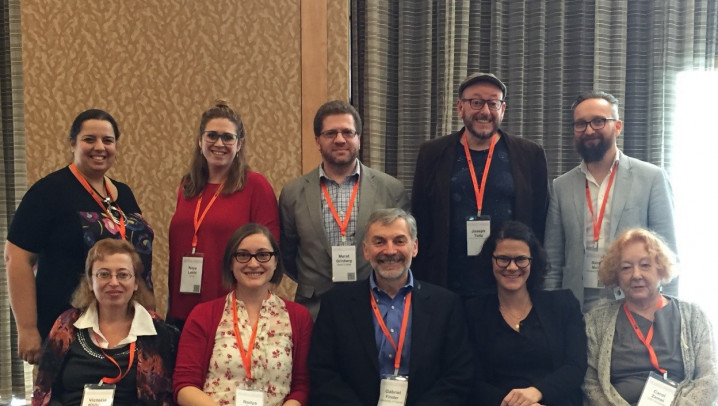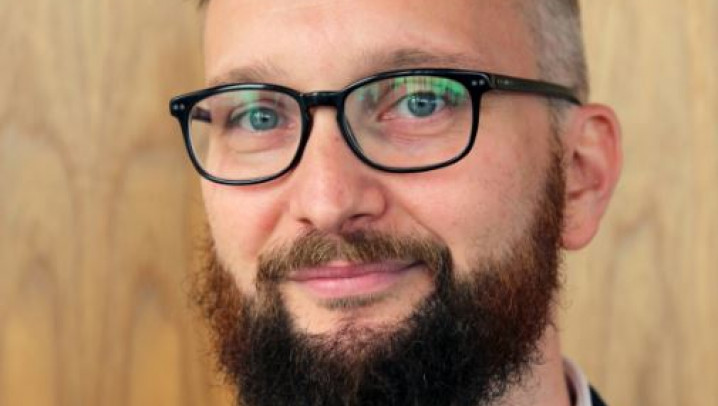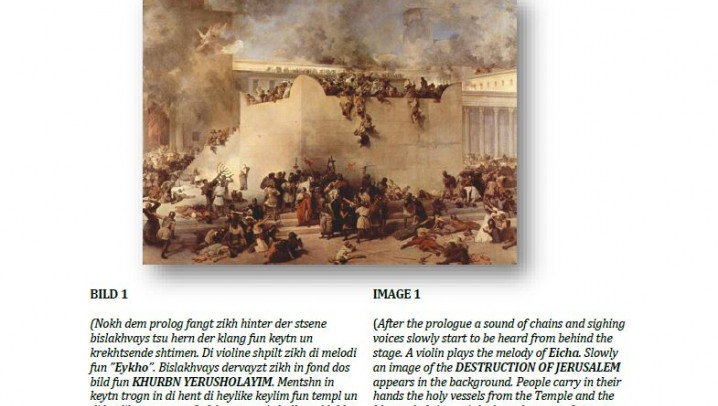
Mother Rachel and her children: the first phase of Holocaust remembrance in Finland
Simo Muir's paper at the 48th Annual conference of the Association for Jewish Studies in San Diego, 2016
| Date | 20th December 2016 |
|---|---|
| URL | https://convention2.allacademic.com/one/ajs/ajs16/ |
An output of Performing the Jewish Archive research.
Simo Muir presented a paper in a session called 'Post Holocaust Cultures: The Many Ways of Bearing Witness and the Yearning for Jewish Survival' at the 48th Annual conference of the Association for Jewish Studies in San Diego, 18-20 December 2016.
Session abstract:
In the wake of the Holocaust, in addition to insuring their physical survival, recreating their families, and establishing themselves economically, surviving Jews told stories, wrote poetry, made music, created art, and reflected on their collective experience and its meaning. Put another way, this vast outpouring of what we might call “post Holocaust culture,” no matter the form it took, might all be seen as a way of “bearing witness.” And the very act of producing culture after the Holocaust suggests a desire for there to be some notion of a Jewish people. This seminar proposes to bring together a variety of scholars interested in Jews’ cultural responses to the Holocaust, including those who experienced it directly and those thousands of miles away. We aim to explore how that culture reflects the experience of the Holocaust and its ramifications on global Jewry.
One form of cultural production is, of course, testimony, a legal concept describing the first-hand documentation of events that one experienced or to which one bore witness. Several seminar participants will examine what we now call “Holocaust testimony” by asking: How do we bring together analyses of testimonies’ historical context with their content, form, and their perception? What are the places, languages, time periods and themes of Holocaust testimony that have been thus far overlooked? Can we historicize conventions of truth-telling? And most importantly, what counts as Holocaust testimony?
Other forms of post Holocaust culture might be considered a form of non-testimonial “bearing witness.” Rather than tell their experiences surviving the war and Holocaust, they represented and/or reflected either on their personal experience of wartime, even if it wasn't an experience directly related to the Holocaust, or on the collective Jewish experience writ large through music, art, and literature. Therefore, two final core questions this seminar will ask are: a) whether someone needed to experience the Holocaust in order to produce culture that “bears witness” to it; b) whether the experience itself created its own genre as in “Holocaust art” or “Holocaust music”? Or do scholars use “Holocaust” as a heuristic device? In other words what is revealed and what is obscured when “Holocaust” becomes an adjective rather than a noun?
Image: Programme for Lin Jaldati's visit to Helsinki in 1946.




